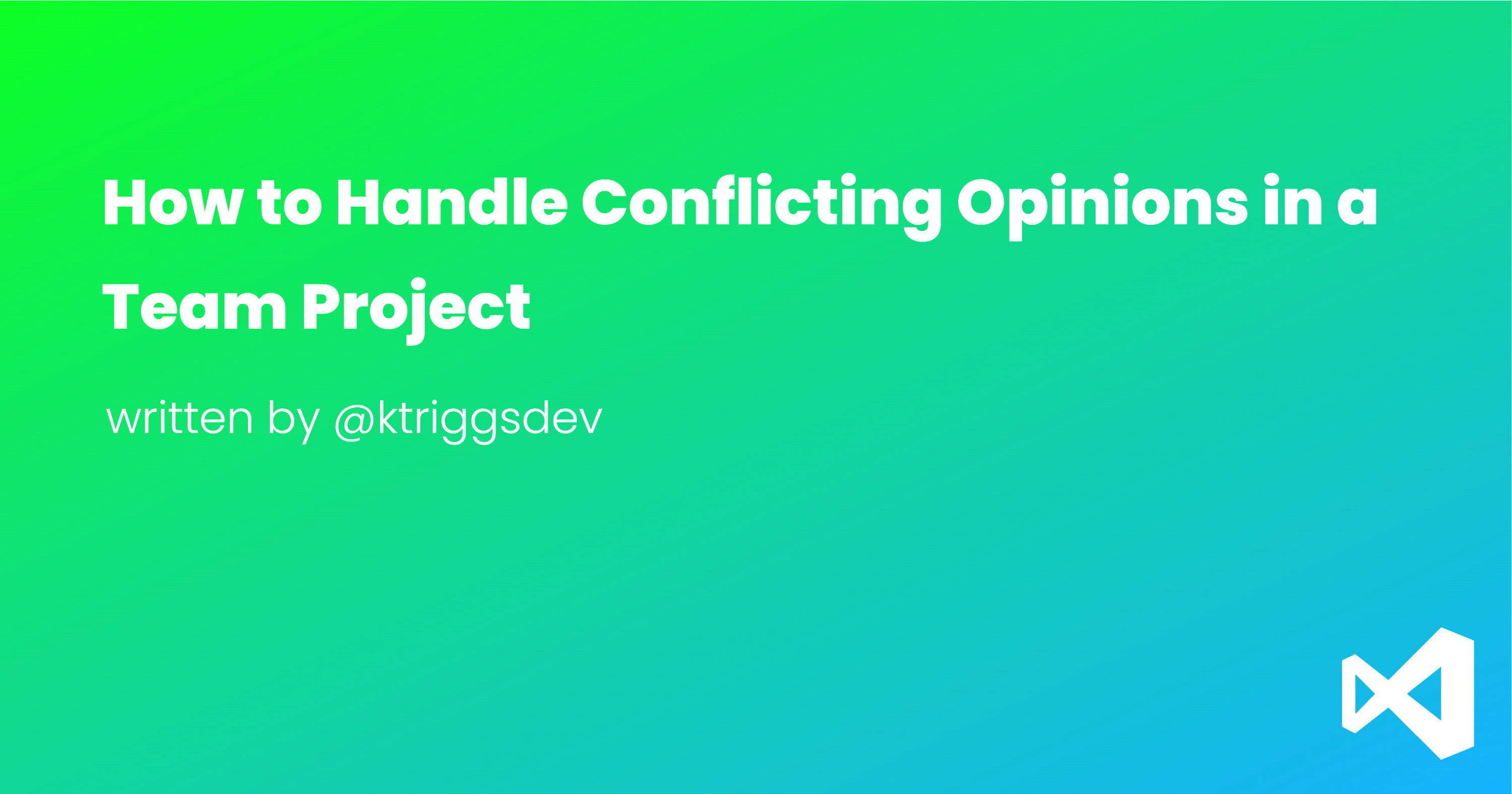How to Handle Conflicting Opinions in a Team Project
 Kieran Triggs
Kieran Triggs
Team projects are great for learning and collaborating, but they can also be challenging when there are conflicts. How can you deal with them effectively and respectfully?
I will share my experience of working on Carbonvio, a carbon footprint calculator with leaderboards and achievements. I will also provide some tips on how to handle conflicts in a team project.
What is Carbonvio?
Carbonvio is an app that helps users track and reduce their carbon footprint by providing feedback, tips, and rewards. Users can also compare their performance with others on leaderboards and earn achievements.
We were a team of four students from different backgrounds and disciplines. We had different skills, perspectives, and preferences, which made our collaboration both interesting and challenging.
How did we handle conflicts?
We faced a few conflicts during our project. Some were minor, such as choosing the colour or the logo. Others were major, such as deciding on the project scope or the app framework.
Here are two examples of how we handled conflicts in our team project:
Example 1: Deciding on the project scope
We had different ideas and interests, and we had to choose one that we all agreed on.
We brainstormed various topics and themes that we were passionate about. We voted on the ones that we liked the most. We ended up with two options: a game about climate change or a carbon footprint calculator app.
We discussed the pros and cons of each option, considering factors such as feasibility, originality, impact, and user demand. We also did some research on existing apps and solutions in the market.
We decided to go with the carbon footprint calculator app option. We felt that it was the most relevant and timely topic given the current climate crisis. We also thought that it had the most potential to attract and retain users by offering them a gamified experience.
We resolved this conflict by communicating effectively and listening to each other. We also used data and evidence to support our arguments and decisions. We made sure that everyone had a say and from that we reached a consensus.
Example 2: Deciding on the app framework
We had two options: JavaScript or Streamlit.
JavaScript is a popular programming language that allows us to create dynamic and interactive web pages. Streamlit is a newer tool that enables us to build data-driven web apps quickly and easily.
We had different preferences and opinions on which framework to use. Some of us were more familiar with JavaScript and liked its flexibility and versatility. Others were more comfortable with Streamlit and liked its simplicity and speed.
We debated the pros and cons of each framework, considering factors such as functionality, usability, scalability, and compatibility. We also tested out some prototypes and demos using both frameworks.
We decided to use Streamlit for our app. We felt that it was more suitable for our project because it allowed us to focus more on the data analysis and visualization aspects rather than the web development aspects. We also thought that it would save us time and effort by providing us with ready-made components and features.
We resolved this conflict by coming to a compromise that satisfied both parties. We agreed to use Streamlit for the main app functionality but also add a JavaScript-based game component, later on, to make our app more fun and interactive. We also respected each other’s preferences and skills and divided the tasks accordingly.
What did we learn?
Working on Carbonvio was rewarding and enriching for us. We learned a lot about carbon footprint calculation, data science, web development, user interface design, project management, teamwork, communication, problem-solving, creativity, and more.
We also learned how to handle conflicts in a team project effectively. Here are some of the key takeaways:
Communicate clearly and respectfully with your team members.
Use data and evidence to support your opinions and decisions.
Seek consensus and compromise with your team members.
Divide the tasks according to your team members’ preferences
You can visit the project here:
Subscribe to my newsletter
Read articles from Kieran Triggs directly inside your inbox. Subscribe to the newsletter, and don't miss out.
Written by
